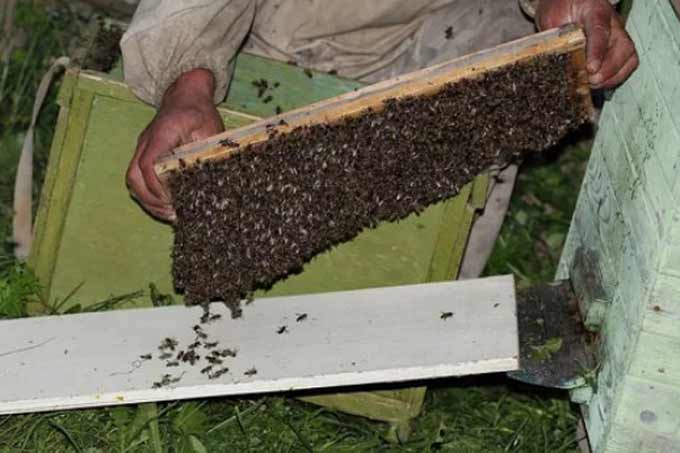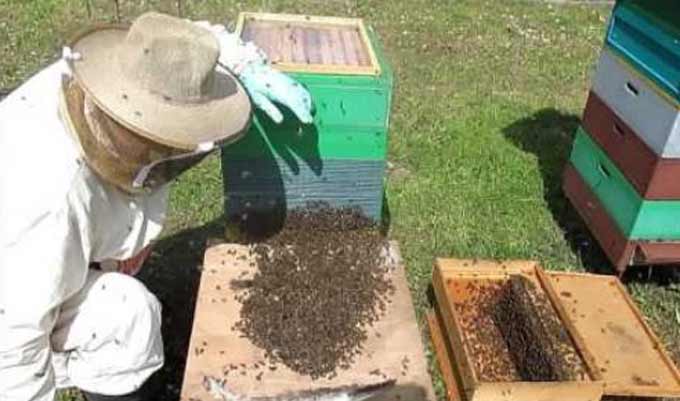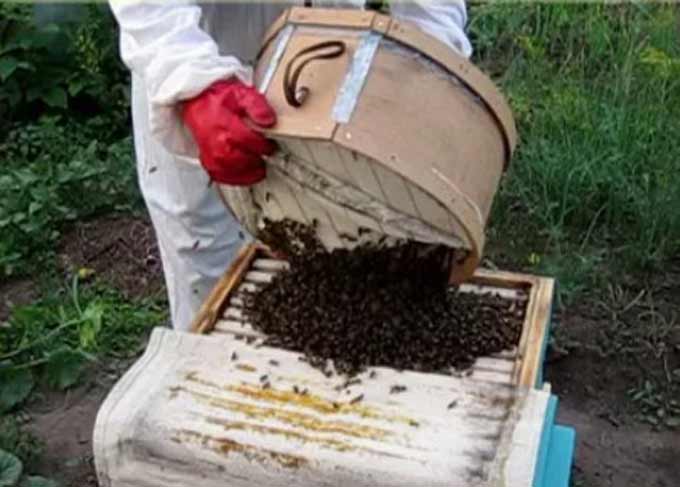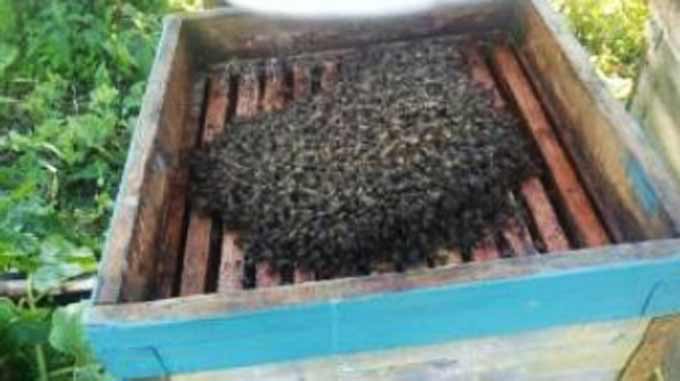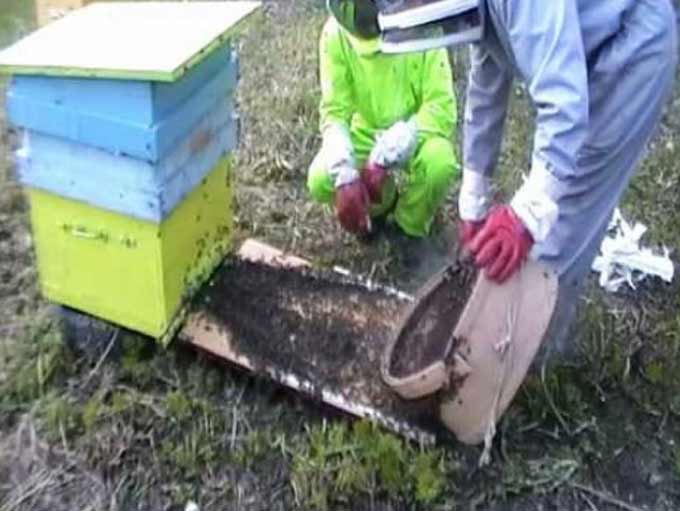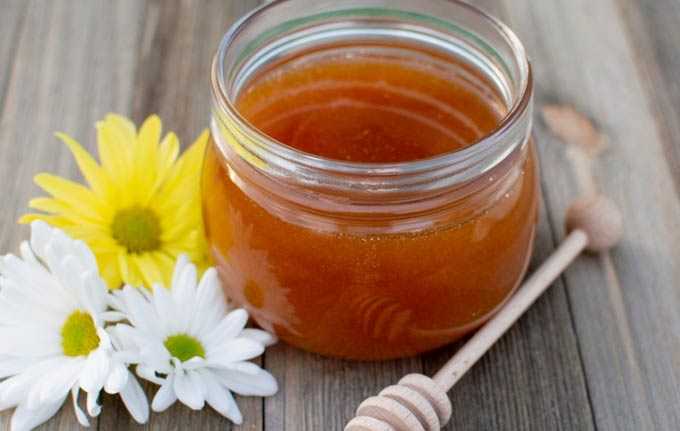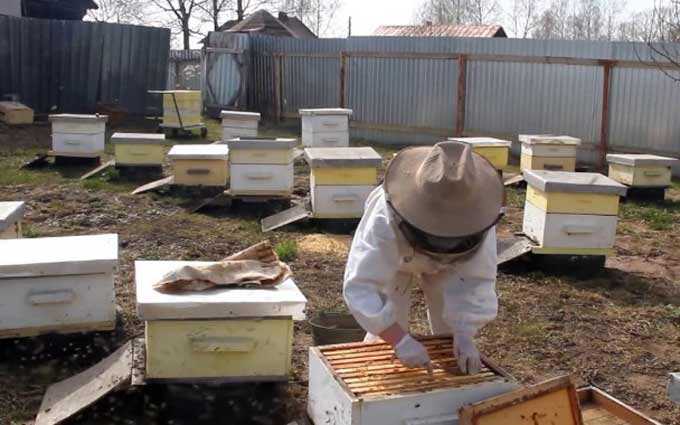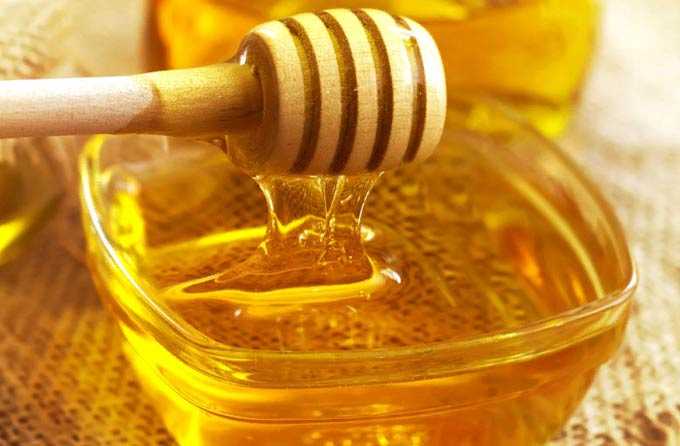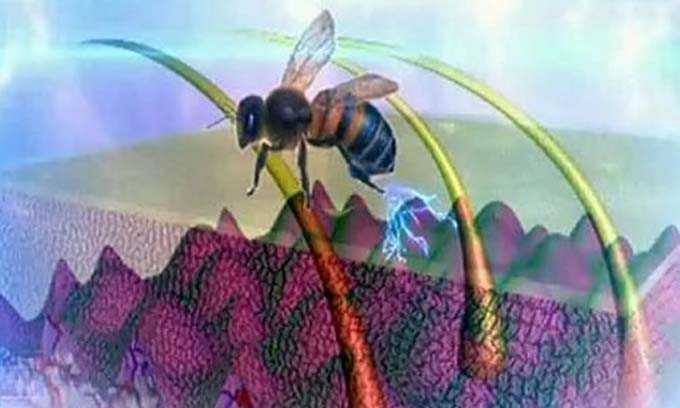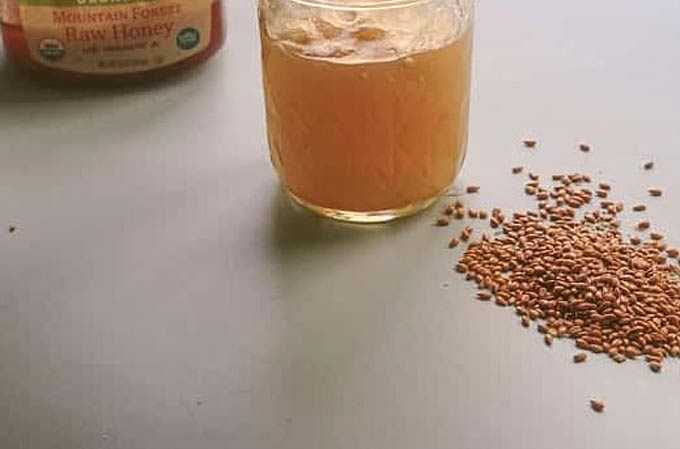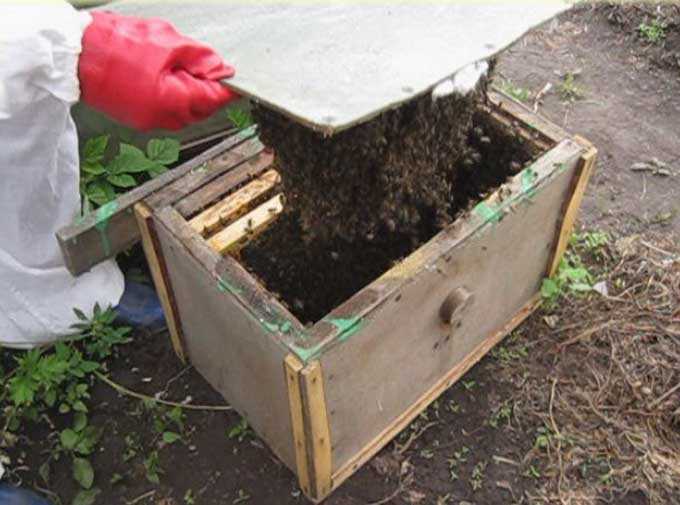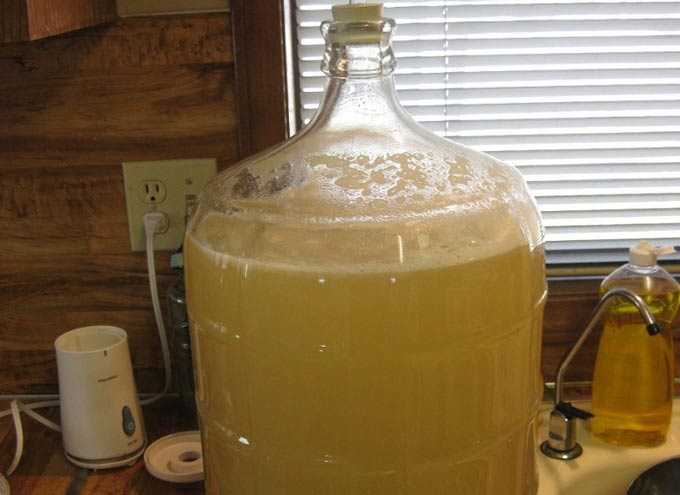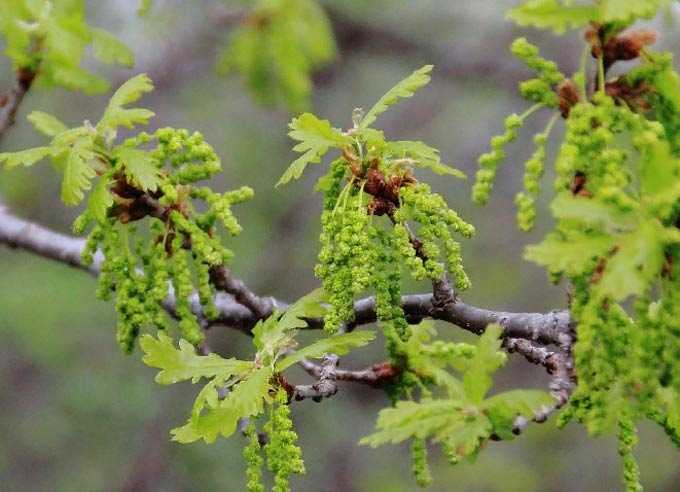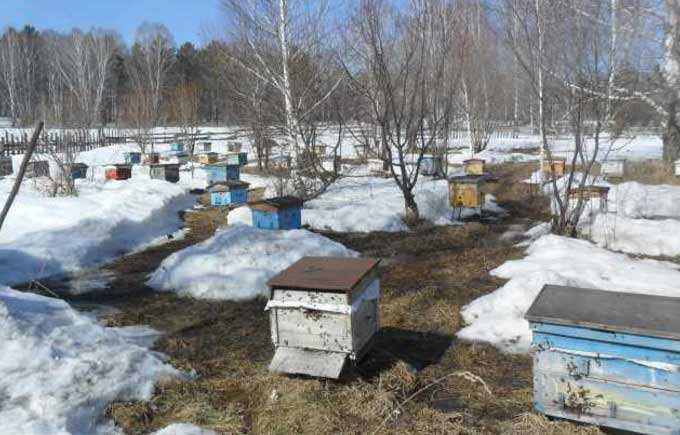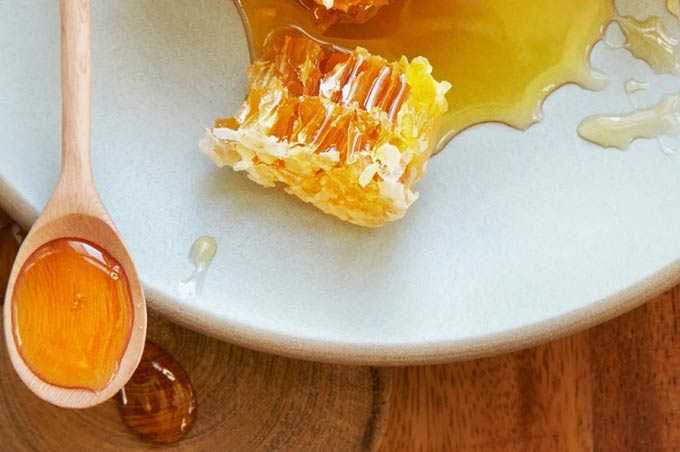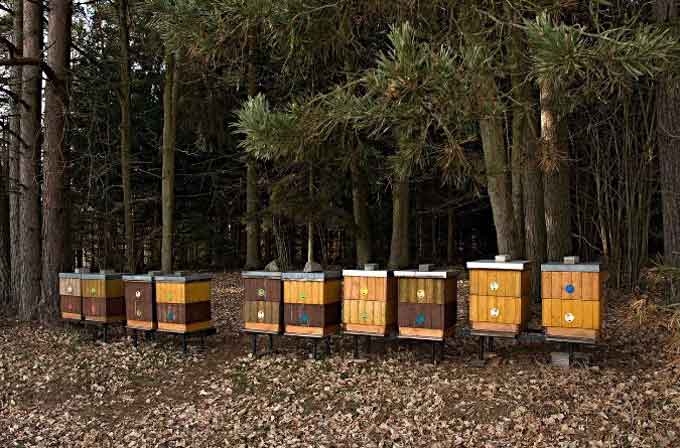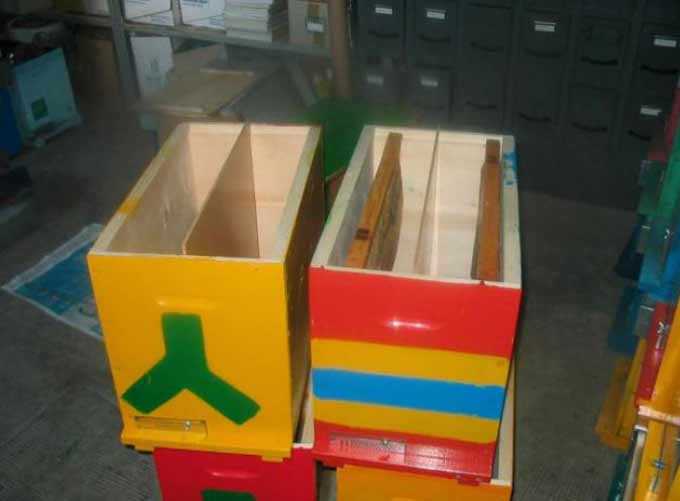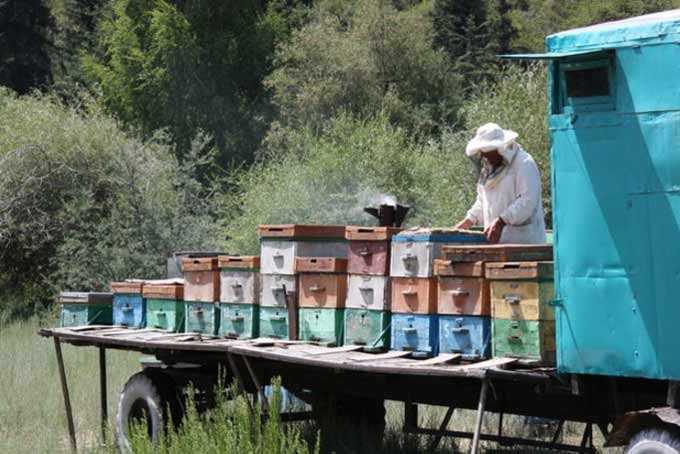Swarms are used by beekeepers to increase the number of bee colonies in the apiary, which has a positive effect on the overall honey harvest. Here we are talking about natural swarming, which is spontaneous and almost always disrupts planned work.
The positive side of such swarming is the high activity of bees. They quickly rebuild the combs, fly intensively and bring a lot of nectar. The disadvantages include a decrease in honey yield, if the mass emergence of swarms occurs during the period of spring-summer build-up of bee colonies.
The content of the article
- 1 Ways of planting
- 2 How to return bees to the parent hive
- 3 If a set of detached cells is installed
- 4 Sedimentation principles
- 4.1 What to do with the parent nest
- 5 How to prepare a clean hive
- 6 Purchased swarms
- 7 Connecting two swarms
Ways of planting
There are two ways to put a swarm in a hive:
- sprinkle insects on top of the installed frames, overturning the swarm or trap box;
- pass the swarm family along the gangway through the entrance slot of the prepared house.
Moreover, swarms do not always settle in a separate hive. When swarming, the bee colony divides, its strength decreases, and, consequently, the honey yield falls. The situation is not very favorable for the beekeeper. For this reason, many beekeepers seek to reunite the parental family and the swarm that emerged from it.
Exclusion of the swarm departure long before the main collection of honey. The early swarm almost always has time to build up its strength and enter the honey season as a full-fledged family.
How to return bees to the parent hive
There are two ways to return bees that have flown away:
The prepared bee house is installed together with the swarming bees in the old place. Store extensions are removed from the parent hive and installed on a house with a swarm. A dividing grid or ceiling with a hole in the middle is placed on top. In the parental family, all queen cells are destroyed, after which the family is placed on top and left there until all the young are released. This technique allows you to completely restore the overgrown bee colony.
The second method involves setting up the parent hive next to the swarm, located in an old place for swarming bees. The letch of the maternal family is turned 90 degrees to the previous position. This technique makes it possible to painlessly move the workers from the parent’s nest to the swarm house – they flock there themselves, since the new hive is in their usual place. All queen cells except for one or two of the best are cut out from the parental family.
The new “queen” will fly around and lead the orphaned nest. Approximately 10 days after the removal of the mother liquors, the parent hive can be rearranged to the other side of the swarm house, and the entrance can be left in the same position. Gradually the swarm will be amplified by the flying bees. After mating of the uterus (the appearance of fresh eggs), the parental house is removed to any free place on the point. As a result, the beekeeper will receive two full-fledged bee colonies that do not need additional reinforcement.
If a set of detached cells is installed
If a set of sushi is installed in a hive prepared for planting a swarm, the bees will begin to restrict egg-laying – the cells will be flooded with honey.
The problem can be solved simply. It is necessary to install extensions in which the insects worked before swarming. The female workers will focus on the new array of honeycomb frames, and the nest will be given to the queen – a full set of combs will be used here for brood.
Since bees actively carry nectar, they have good wax separation – you can give an artificial foundation for adjustment. The uterus is more willing to choose fresh combs for laying. Moreover, in this case, she uses the free space more purposefully and accurately than when the nest is filled with ready-made dry land.
Sedimentation principles
The settling or transplantation of the swarm is carried out after the intensive bee years stops at the point. In this case, the insects will settle well in a new place overnight and start building the nest. And in the morning, intensive honey collection will begin.
Landing early in the middle of the day can lead to re-flight!
Landing through the notch:
- in the prepared bee house, the tap hole is completely opened;
- attach a pitched board or plywood;
- swarm bees are carefully poured;
- to speed up the process, insects can be lightly sprinkled with water.
The first bees to reach the hive begin to emit an attractive scent. From this point on, the swarm goes inward without any problems or interference from the beekeeper. The entire resettlement takes an average of half an hour. After the specified time, you can remove the board, adjust the width of the nest and leave the bees alone.
For two to three days, the nest should not be disturbed to ensure the required temperature!
In rainy weather and there is no bribe in the bee house, two days after planting, additional feeding is given – 1,5-2 liters of syrup.
The expansion of the nest is done in 5-7 days. Can be strengthened by a colony of one or two brood frames. If there is an old queen in the swarm, at the same time it can be replaced by a young “queen”.
Transferring to a hive from a trap is not much different from transferring a swarm from a swarm. In both cases, the formed bee colony can be either shaken out onto the frames, or driven through the tap hole.
The main advantage of the ferry is the ability to see the uterus for yourself. This is the ideal way to get around for a first swarm.
The order of landing on top of the frames:
- the lid is removed from the bee house, and a canvas is lifted from the frames;
- then swarm bees are carefully poured – they sit in the club, therefore they fall on the frames in small heaps;
- the last insects are shaken out by patting the sides of the swarm or trap box made of plywood with their palms;
- on top of the frames, transverse slats are installed in advance – they will allow the canvas to be lowered without harming the bees.
The bunches will quickly disintegrate – from the top of the nest, the bees will crawl along all the streets between the frames. After that, a lid is installed, and the entrance is covered – a gap of 5-10 centimeters is left.
No need to smoke! Swarming insects are absolutely not aggressive towards humans.
What to do with the parent nest
The hive from which the swarm flew can be inspected on the same or the next day.
All queen cells are removed, and then a new “queen” is issued. If there are no spare queens in the apiary, you can leave the best queens. The exit of the “queen” is controlled a week after the inspection. And after 12 days, you can check how well the flying and mating female sows.
How to prepare a clean hive
The bee house intended for planting must be absolutely clean and dry. It does not need to be specially warmed up in the sun.
However, to remove the musty or unpleasant odor, it is advisable to thoroughly ignite all empty houses in advance in the midday sun. And only after that, use them for their intended purpose.
The walls from the inside, the canvas and the tap hole must be rubbed with a bunch of mint or lemon balm, and also walk over all the listed surfaces with a cotton swab dipped in propolis tincture.
Then three or four frames are installed in the dwelling with foundation for every kilogram of bees. The second and third honeycomb frames should be half filled with honey on the edge (up to about 1,5 kg concentrated at the top), and the printed brood is at the bottom.
Of course, such honeycombs are not always available. You can put one brood and one honey frame. Moreover, the brood is installed in the nest at the same time as planting, so as not to chill the young.
If there is no feed or brood at all, proceed as follows:
- put dry in the center of the nest, and frames with artificial foundation on the sides;
- sotoframes are sprinkled with mint syrup;
- a feeder filled with sugar syrup is placed in the nest;
- late in the evening they carry out a transplant.
Purchased swarms
If the owner is interested in expanding the apiary at the expense of swarm bees, it is advisable to purchase swarms of pervak (May or June), weighing at least 2-3 kilograms. Over the summer, they will turn into strong bee colonies. But in such a family it is necessary to replace the queen in the next season (bees fly out with an old fetal “queen”).
In early July, small swarms weighing up to a kilogram are formed. They gain strength poorly and can die in winter.
Later swarming occurs on a young, infertile uterus. It often happens that a young “queen” dies during the first flyby. And since the swarm bees do not have brood and they cannot breed another queen, the hive dies.
The presence of a uterus is easily determined by the behavior of insects:
- The “queen” is alive – it is quiet in the swarm or trap;
- a loud noise indicates the absence of a queen – if the bees are not released immediately, they can steam up and die.
Connecting two swarms
From several swarms, the so-called honey swarms are formed with a total mass of bees up to 5-6 kilograms. You can combine:
- first earliest and second swarms;
- two second swarms (second swarm).
You can combine two swarms into one hive like this:
- The prepared dwelling is filled with dry land and foundation, at the same time a store with empty honeycomb frames is installed on top.
- The bees are launched into the house through a dividing grid.
- The queens are caught and isolated in cages, which are fixed in different streets.
- One of the “queens” can be released on the third or fourth day. The rest of the queens are removed from the nest.
- After pumping out the honey, such a family can be disbanded by placing workers and brood on other nests in order to strengthen them.
Another way:
- the first swarm sits in one body, a deaf diaphragm is installed;
- on top is the second building with a smaller swarm;
- 7 days later, or immediately before the bribe, a newspaper is spread between the buildings, the queen is removed from above (in reserve) – the bees themselves gnaw the newspaper and unite.
According to the observations of beekeepers, swarms emerging at intervals of several days can be deposited in one hive without looking for queens. It turns out something like a natural swarm of swarms (as in nature). With extra “queens”, honey bees solve the problem on their own.
Note: The resulting honey hive will be one of the first to develop next year. So leaving him for the winter as the main family is not worth it.

